
THE PELAGIC TRIP TO – EASTERN ISLES – BISHOP’S ROCK – 20 MILES NORTH OF ST MARYS BACK ON TERRA FIRMA – LOWER MOORS AND THE STANDING STONES FIELD
WEATHER: high cloud but mainly sunny, light winds.
Our Pelagic trip from the Quay at St Marys lasted 5 hours, 3 of the group decided not to take it but the rest of us braved the trip. The first couple of hours were pretty tough, lots of swells, rocking the boat too and fro and not many birds to see at all. You couldn’t stand up, you had to grip something for support, so using your binoculars with one hand wasn’t ideal.

the view of Porthcressa Beach from the Buzza Tower just behind our Guest House

The Lighthouse at Bishop's Rock is where the Red-footed Booby used to roost.
Another hour went by, during which we saw a single Cory’s Shearwater, a Sandwich Tern and a Guillemot! We had visited Bishop’s Rock in the hope of a sighting of a Red-footed Booby. Then just on the 3-hour mark we started to bump into more shearwaters, the latter two hours were packed with bird sightings, it was quite exciting.

It's behind you!!! A Cory's Shearwater
With a calm sea we were able to stand up and use our binoculars properly, we had some amazing sightings. Small rafts of a mixture Cory’s, Great and Sooty Shearwaters were very close to the boats we had amazing views of them all.
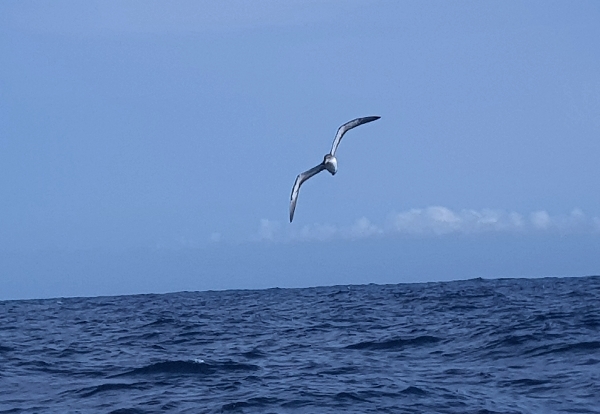
the same bird came even closer
The ‘chumming’ off the back of the boat attracted more birds, lots of gulls, we had several sightings of European Storm Petrels and at one stage we had four Great Skuas chasing Gannets and gulls at the back of the boat.
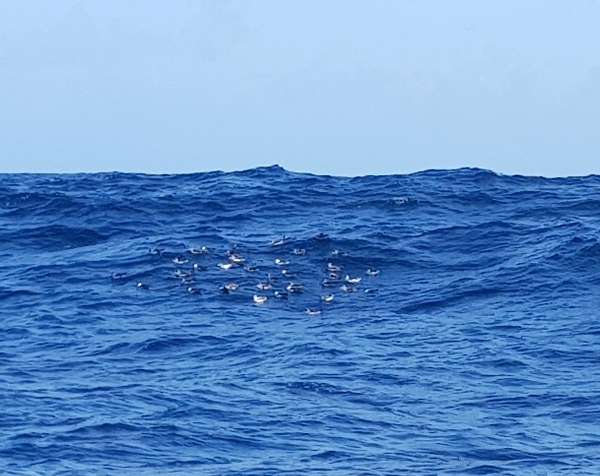
a small raft of mixed shearwaters, Cory's and Great Shearwaters
More shearwater ‘rafts’ appeared, we also saw a single Arctic Skua, 3 Common Terns and a Portuguese Man-of-War. The final count made by the captain was: 150 Cory’s, 80+ Great, 7 Sooty, 4 Manx Shearwaters. 4 Bonxies, 1 Arctic Skua, 1 large unidentified Skua (pending photographic analysis), 1 Grey Phalarope, 5 European Storm Petrels. I think all five us saw most of the birds on offer.
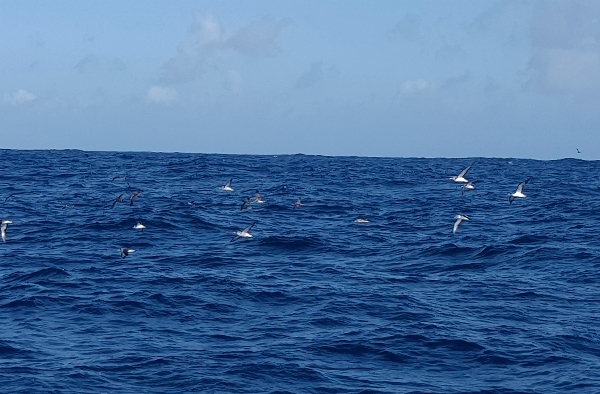
both Cory's and Great in flight - unfortunately all my pictures were take with the phone - hand held
We returned to shore after 5 hours of being rocked about, my balance didn’t return to normal until after dinner at 7pm.

From the quay we walked into town and, you guessed it, coffee and cake was our priority! We then marched up the hill to our guest house to pick up our scopes and within 10 minutes we were on our way to Old Town to visit the standing Stones Field once again, to look for the Red-backed Shrike which had eluded us in previous visits.

juvenile Red-backed Shrike
This time we got straight onto the bird which showed very. We then made a quick visit to Lower Moors ISBG Hide to view the small wader scrape and pool. We saw two Greenshanks and missed a Marsh Harrier by three milliseconds.

the pool at Lower Moors
A Red-breasted Flycatcher had been reported from the blind at ‘Shooter’s Pool’ this morning, we made a quick visit just in case it had returned. We saw our first Grey Wagtail of the trip, our first Common Chiffchaff as well as a few common species. No flycatchers showed up but we did hear Cetti’s Warbler.
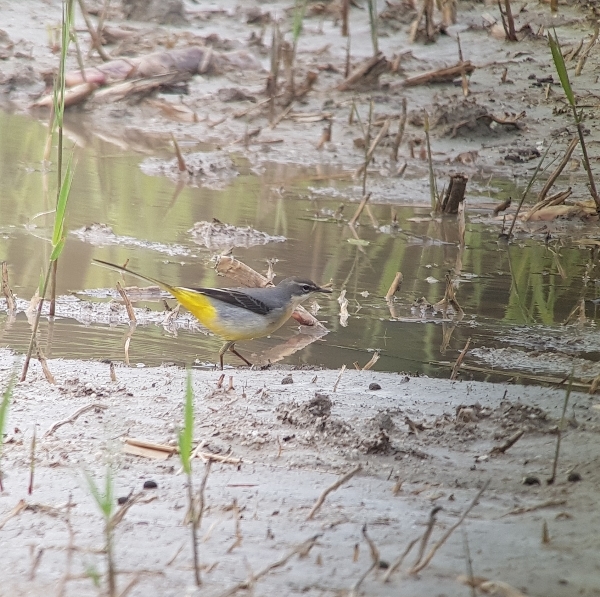
Grey Wagtail
On the way back up the hill we searched for a Wryneck near the school playing fields without luck, so we called it a day at 5pm. Our dinner was booked back in town for 6:30pm so we had to get a move on.
Phil & Sue had stayed on dry land all day and enjoyed walking to Peninnis Head and then down to Old Town Beach and into Lower Moors with a stop off in the standing Stones Field. They had seen a nice variety of species which included Wryneck, Red-backed Shrike, Grey Wagtail, Whinchat and Phil had a photograph of wat looked very much like a Tree Pipit.
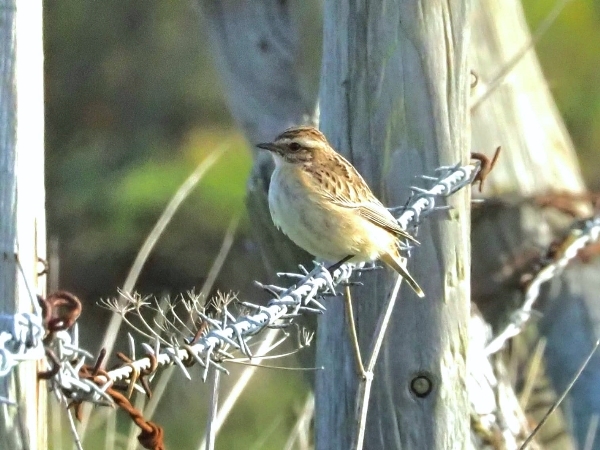
above - Whinchat and below - Red-backed Shrike - both taken by Phil Naylor

